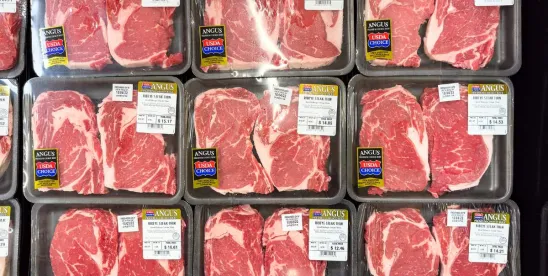On October 15, 2024, the Occupational Safety and Health Administration (OSHA) issued a new enforcement memorandum related to the animal slaughtering and meat processing industries. This is an expansion of an October 2015 enforcement memorandum directed to the same industries. The new memorandum expands on the old.
Quick Hits
- Under a new enforcement memo related to the animal slaughtering and meat processing industries, inspections of covered establishments are likely to be in-depth and time-consuming.
- The memo directs compliance officers to make referrals to other federal agencies, including the USDA’s Food Safety Inspection Service.
- The memo directs compliance officers to focus on employees “who are most at risk” and to make referrals to the DOL’s Wage and Hour Division regarding any child labor law violations or unlawful wage practice claims that might be revealed as a result of an inspection.
The latest guidance compels OSHA performing inspections at covered establishments (North American Industry Classification System (NAICS) Code 3116, including Codes 311611, 311612, 311613, and 311615) to focus on the following hazards:
- Sanitation and Cleanup Operations
- Ergonomics/Musculoskeletal Disorders
- Personal Protection Equipment (PPE)/Payment for PPE
- Hazardous Energy (Lockout/Tagout)
- Machine Guarding
- Slips, Trips, and Falls
- Process Safety Management—Ammonia
- Chemical hazards—Hazards – Ammonia, Chlorine, Hydrogen Peroxide, Peracetic Acid, Carbon Dioxide, Nitrogen (gas & liquid)
- Occupational Noise
- Egress and Blocked Exits
- Recordkeeping
In addition to these hazards, the memo also directs compliance officers to look for other hazards and enumerates the following: “the inadequacy of toilet and sanitary facilities, and worker access to them; those associated with handling live animals, meat that is freshly slaughtered, ill animals and contact with animal feces and blood; cuts and lacerations from knives or scissors; contaminated surfaces; dirt and dust; electrical hazards; and medical mismanagement.” The memo clarifies that this list is not exhaustive.
In a development foreshadowed in early 2023, the memo specifically directs compliance officers to make referrals to the U.S. Department of Labor’s Wage and Hour Division regarding any child labor law violations or any unlawful wage practice claims that might be revealed as a result of an inspection. It also directs compliance officers to make referrals to other agencies, including the U.S. Department of Agriculture (USDA) Food Safety Inspection Service (FSIS), when violations are detected.
The memo instructs that inspections should be conducted “during off-shift times to ensure that second and third-shift operations, such as sanitation services, are covered.” Contractors and temporary workers who provide on-site sanitation services at an animal slaughtering and processing facility are to be included in the inspection and the injury and illness records covering third-party sanitation employers reviewed.
Consistent with prior guidance concerning temporary and young employees, compliance officers are to focus on employees “who are most at risk (i.e., temporary workers or those performing newly assigned hazardous tasks, entry-level tasks, sanitation, and cleaning),” and:
- ensure “that work is observed, and workers are interviewed, as practicable within the scope of the inspection”;
- review training and focus on the “training effectiveness and worker understandability” of the training;
- interview employees with translators as needed to overcome language barriers;
- include employee representatives in inspections consistent with the directions in the Field Operations Manual and the walkaround rule published in March 2024; and
- if necessary, obtain a Medical Access Order to gain access to personally identifiable employee medical information.
Clearly, OSHA inspections of covered establishments will be in-depth and time-consuming under this memo. The memo also clearly intends to address a number of concerns raised by OSHA over the years related to populations considered at risk by the agencies, whether as a result of age, immigration status, or language. OSHA inspectors will also make referrals to other agencies that could lead to other inspections by those agencies.




 />i
/>i
